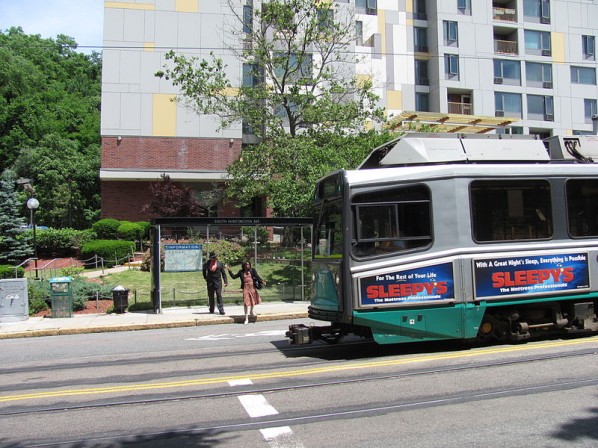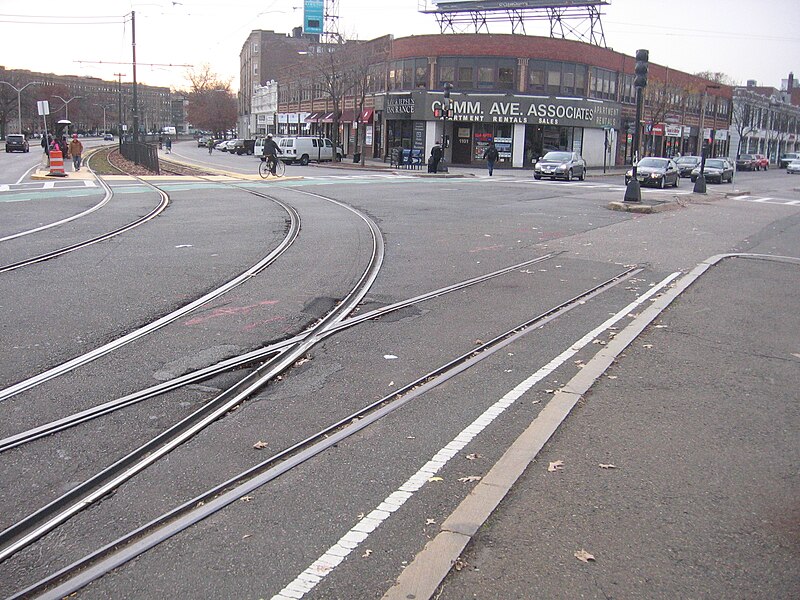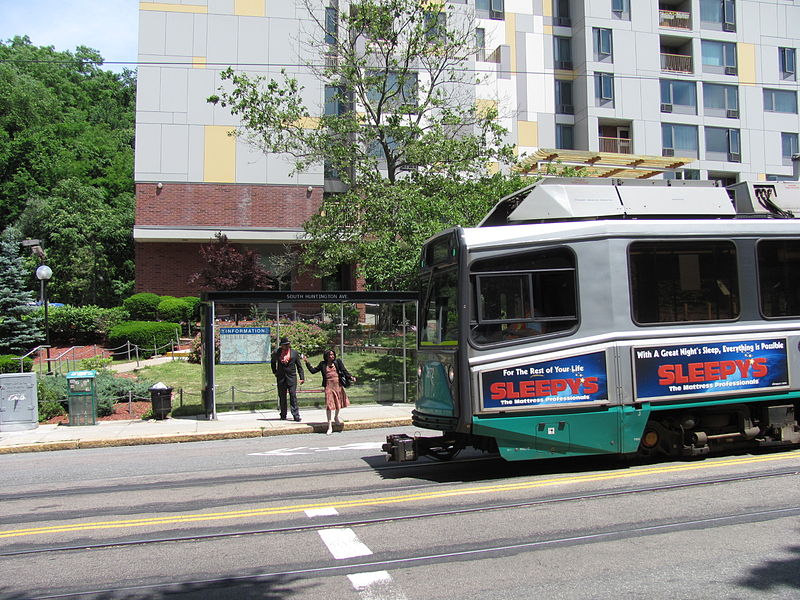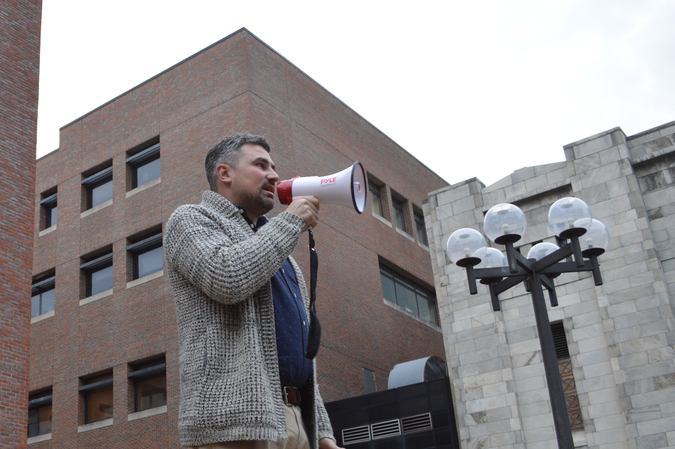
Let’s take a second to think about the alphabet. A, B, C, D, E, etc. That’s how it goes. Starting with A and in that sequence, that is what we call alphabetical order. The ultimate way to store, sort and label. But not for the Massachusetts Bay Transit Authority (MBTA).
Anyone who has boarded an MBTA Green Line train at Government Center or Park Street knows riders have a choice between four lines: B, C, D or E. Wait a second. Something’s missing. Where’s A? What happened to the A line?
There was, once upon a time, an A line. David Sindel, a sophomore in the College of Engineering, wrote the Wikipedia article on the subject. It ran from Kenmore Square to Watertown Yard: the route of the 57 bus today. In fact, the 57 replaced the A line.
“It was called a temporary substitution…but there was never any serious attempt to replace it,” Sindel said. After a few trial bus replacements, the A line was closed to passenger traffic in June 1969, leaving the 57 to service the route it ran since 1912.
In the 1980s, the line’s tracks were replaced, suggesting that the line might make a comeback, but Sindel said that was always unlikely.
“Once it was gone, it probably wasn’t coming back,” he said.
Nonetheless, the tracks remained more or less intact until 1994, when they were ripped up in pieces until 2003. Then, in an act of what Sindel describes as “salting the earth to prevent service from ever coming back,” the city of Boston installed flowerbed medians filled with dirt and concrete where the train used to run, seriously dampening any serious attempts to reinstate the Green Line branch.
Although Sindel said people were generally upset when the A line closed down, the MBTA and the City of Boston had several reasons for wanting to shut it down.
The most obvious one, and the one the MBTA cited as the main reason for the decision, was a lack of workable streetcars after the D line was converted from a sleepy commuter rail line to a street rail trolley. According to Sindel, the Massachusetts Transit Authority (MTA), the MBTA’s predecessor, “had done a spectacularly poor job of maintaining” its streetcars, making it impossible for the MBTA to service another streetcar line without taking cars from the A line.
What’s more, the trip from Kenmore Square to Watertown Yard was long, the longest of the A line branches. “It was taking service away from the central subway,” Sindel said. “By getting rid of the A branch, they can focus more service on the core downtown region.”
In addition to the MBTA’s reasons for the A line’s closure, Sindel believes there are other, more intuitive explanations for the end of the A line.
The A line was a streetcar line, meaning its tracks ran in a lane of traffic and it was just as much a part of the road as cars were. That meant if a streetcar broke down while in service, it became an immovable traffic disruption until it could be fixed. In short, the streetcar system was a far cry from the B line’s clearly separated railway running down the middle of Commonwealth Avenue.
As would be expected, this system “was very unpopular with the MBTA management because it led to a higher number of accidents,” Sindel said. “The City of Boston [was], even more so than the MBTA, against street running because they don’t like how it plays with traffic.”

To make matters worse, in 1964, the same year the MBTA took over for the MTA, Boston extended the Massachusetts Turnpike and built a rotary at exit 17 in Newton that fed into an A line streetcar lane going the opposite direction of traffic. City officials approved the plan thinking the exit wouldn’t be heavily used, but when they turned out to be wrong, the exit became a mess of cars dodging their way around trolleys. It became a concentrated example of the problems with having streetcar trolleys in car-centric Boston.
With these issues in mind, it is easy to see why the MBTA discontinued the A line, and why the city of Boston did what it could to prevent it from returning. Now there are only a few remnants of the streetcar line left, including a few feet of track at Packard’s Corner, fewer than a dozen orange poles where passengers would wait for a trolley and the Watertown car house, which still has some track and overhead wire from the A line.
Alongside these physical remnants, the A line will forever remain a curiosity in the minds of Bostonians staring at Green Line maps, puzzling over what happened to the elusive “A.” For a few Boston drivers, there will also remain the terrified memories of coming off of exit 17 into the blaring headlights of a streetcar, desperately wondering why there is a train on the street.



